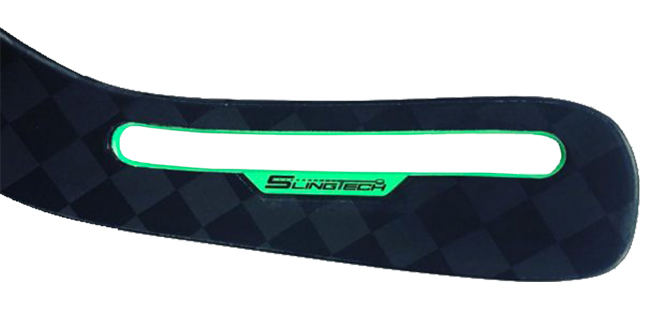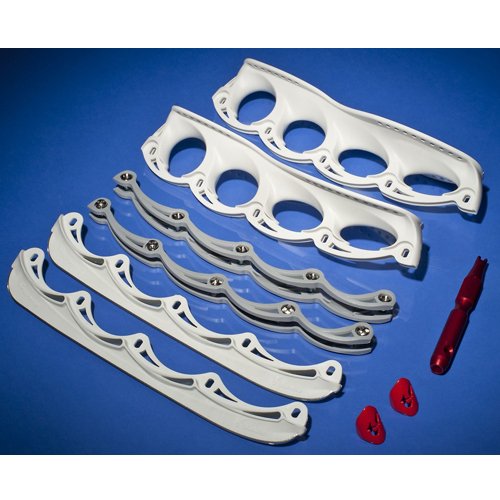The Best of the Worst Hockey Equipment Gimmicks
Posted by on
Any sport that relies on gear as much as hockey does is, every so often, going to be presented with the Next Big Thing, that latest-and-greatest innovation that will revolutionize the game — or at least your ability to play it.
Of course, some of these “advances” have proven less than advantageous. Not all equipment gimmicks will get remembered, but we hope the memory of these legends never die.
Stick Tricks
We’re looking at you, Bauer Nexus ADV.

The latest addition to the Nexus ADV line, scheduled for a Jan. 25, 2020, release, features SlingTech — which, frankly, looks like a mail slot carved into the top of the blade. Bauer has been stingy with details so far, but the assumption is they’re looking to add speed and stability to the blade while reducing weight. Whether the blade will hold up is a question on many minds.
Meanwhile, here are some innovations that didn’t stick:
Easton Synergy EQ50: Adjustable weights were the big thing in golf drivers a decade ago, and Easton jumped on the trend with the EQ50. The butt end of the stick came with slots to add or subtract as many as four 5-gram weights to alter the stick’s balance.

Reebok O Stick: Call them holes or call them Power Ports, the O Stick had openings designed to increase a stick’s speed, lower its kick point and generally stabilize it. Allegedly.
Easton Aluminum: Wayne Gretzky used it for a while, and even that couldn’t make a zero-flex shaft popular.
TPS Rubber: Yep. Rubber. Super whippy.
Curtis Curves: Goalies get innovations, too. This curved shaft was supposed to allow more stick on the ice when going paddle down. The problem? The stick was harder to handle in all other situations.
Do You Have a Screw Loose?
No, this is not a question for the guy who designed long pants for NHL players.
(Those, by the way, were called Cooperalls. The nylon pants were worn by the Philadelphia Flyers and the Harford Whalers before the NHL banned them in 1983. It seems the material, while offering excellent padding, was also super slick when it hit the ice, resulting in high-speed collisions with the boards.)
Rather, we’re asking anyone who got sucked into the T Blades cult.
T Blades have been around for years, but its concept of replacing rather than resharpening skate blades has never quite gone mainstream. This, despite claiming advantages such as increased speed and maneuverability, not to mention a blade that stays sharp longer than traditional styles.

So why didn't it catch on?
T Blades might stay sharp longer, but they’ll still nick or chip. Damaged areas can’t be sharpened away, so there’s a replacement cost.
Then there are the screws and stabilizer used to hold the blades in their plastic mount. Either can loosen. If that happens on the ice, players with compromised skates and players skating over stray parts are subject to injury.
(T Blade accessories image via t-blade Hockey Twitter.)
Not So Foxy
Of course, no Hall of Fame of head-scratchers would be complete without the FoxTrax System.
From the 1996 NHL All-Star Game until Game 1 of the 1998 Stanley Cup Final, Fox Sports superimposed a blue glow over the puck during select broadcasts. The glow turned into a streak on passes, and the streak turned red when a certain puck speed was reached.
Believed to be a nod to the American complaint that the puck was too hard to see, traditionalists and Canadians hated the gimmick. While HD TV has solved the puck visibility problem, it’s worth noting that the development of the FoxTrax System led to other innovations in on-screen sports graphics (hello, yellow first-down line).
So, here’s to the harebrained. This year’s reject may evolve into next year’s revolution.
 Loading... Please wait...
Loading... Please wait...


